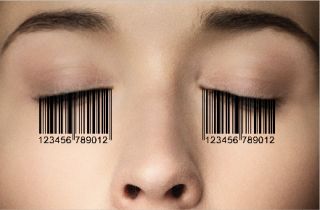Unconscious
Unconscious Branding
Elucidating the unconscious mind helps marketers help consumers
Posted November 12, 2012

Every year an absurd tragedy occurs in our lagging market economies. Billions of dollars are wasted asking consumers questions they can’t answer. In the U.S. an abysmal 2 out of 10 product launches succeed because what people say in traditional market research surveys can’t reliably predict what they actually do. We’re all playing a game without knowing the rules.
That’s because humans, i.e., consumers, make the vast majority of decisions in life quite unconsciously. What is a no brainer to cognitive scientists remains mind boggling to marketers. Markets flounder because consumers can’t articulate their deeper desires and companies fail to reach these unmet hidden needs. The blind leads the blind.
Steve Jobs was the exception. When asked how much research was conducted to guide the launch of the iPad, he famously quipped, “None. It isn’t the consumers’ job to know what they want.” The iPad, according to some measures, would become the most successful consumer product introduction in history and Apple the most valuable company of all-time.
Businesses have been asking the wrong question. Instead of asking why consumers do what they do, we need to ask how. We need to shift from measuring the outward expressions of beliefs to better understanding the inward causes. That is, how do our minds process information and form the often-unconscious beliefs that drive motivation? Fortunately there is a sequence and structure to this process and elucidating it will help both sides of the free market fence.
As a marketing strategist and researcher my frustration with the tools of my trade led me to search for better answers. I found them not in market research, but rather in the research of cognitive and behavioral authorities. I also became a behavioral change therapist and learned how to help everyday people who were interested in changing their lives…not because of emotional illness but for self-improvement and a more fulfilling life, the same things people seek in brands.
Through that work, I noticed first hand how the unconscious was the key to that change. So I began reverse engineering what I learned from neurobiology, evolutionary psychology and behavioral economics, starting with the things that were proven to yield real results quickly in real people. I created a seven-step process to change behavior, one that I have been applying to marketing strategies with remarkable success ever since.
These are the seven steps: 1) Interrupt the Pattern, 2) Create Comfort, 3) Lead the Imagination, 4) Shift the Feeling, 5) Satisfy the Critical Mind, 6) Change the Associations and 7) Take Action.
This new shift from a cultural to a biological view of behavior is one of the most promising opportunities in the history of humanity. There is so much fertile ground but woefully few farmers. We need an organizing framework to put these insights into practice. Because many of the most outward, pervasive and economically significant manifestations of our culture--such as the products and services we buy everyday and the advertising that moves us most —often have clearly explainable neurobiological determinants. Piggybacking culturally relevant messages atop these cognitive truths exponentially increases impact.
Take for instance an ad we created at Deutsch LA for Volkswagen, which leveraged Star Wars fame and the first of my seven steps: Interrupt the Pattern. The pathway to our unconscious best begins by galvanizing our conscious attention. But awareness of our surroundings occurs only when the things we perceive violate our expectations. We only really notice the car driving in front of us when its’ brakes are slammed. Our mind is a prediction machine that works via pattern recognition. When something unexpectedly defies our prediction, our expected pattern, we are forced to take notice. This is the biological basis of how consumers learn and how marketers break though clutter.
The commercial we created interrupted perceptions of the concept of the evil Dark Lord by featuring an adorable pint-sized version that quickly became a global phenomenon. In the ad, mini-Darth Vader is seen in a series of unsuccessful attempts to use “the Force” on various household items, each time predictably failing, until he encounters the new 2012 Passat. This time the pattern is interrupted as the car comes to life by the power of his little raised hands after his dad secretly starts the engine using the remote start feature on the key fob.
“The Force” generated a staggering 54 million views on YouTube and a reported 6.8 billion impressions worldwide and more than $100 million in earned media. We were merely building upon Volkswagen’s great legacy of using pattern interrupts. In 1959 they introduced “Think small”, a refreshing campaign counter to an industry of conspicuous consumption that boasted big. A zig among zags that Advertising Age ranked the top ad campaign of the century.
“The Force” also generated an outpouring of support from delighted brand fans inspired by the charming tale and a magical moment in the life of an imaginative little boy. And the Volkswagen brand enjoyed a remarkably successful sales year, achieving its highest market share in decades. A “win win” for both company and customer.
If you'd like to learn more, visit my website at: www.unconsciousbranding.com




